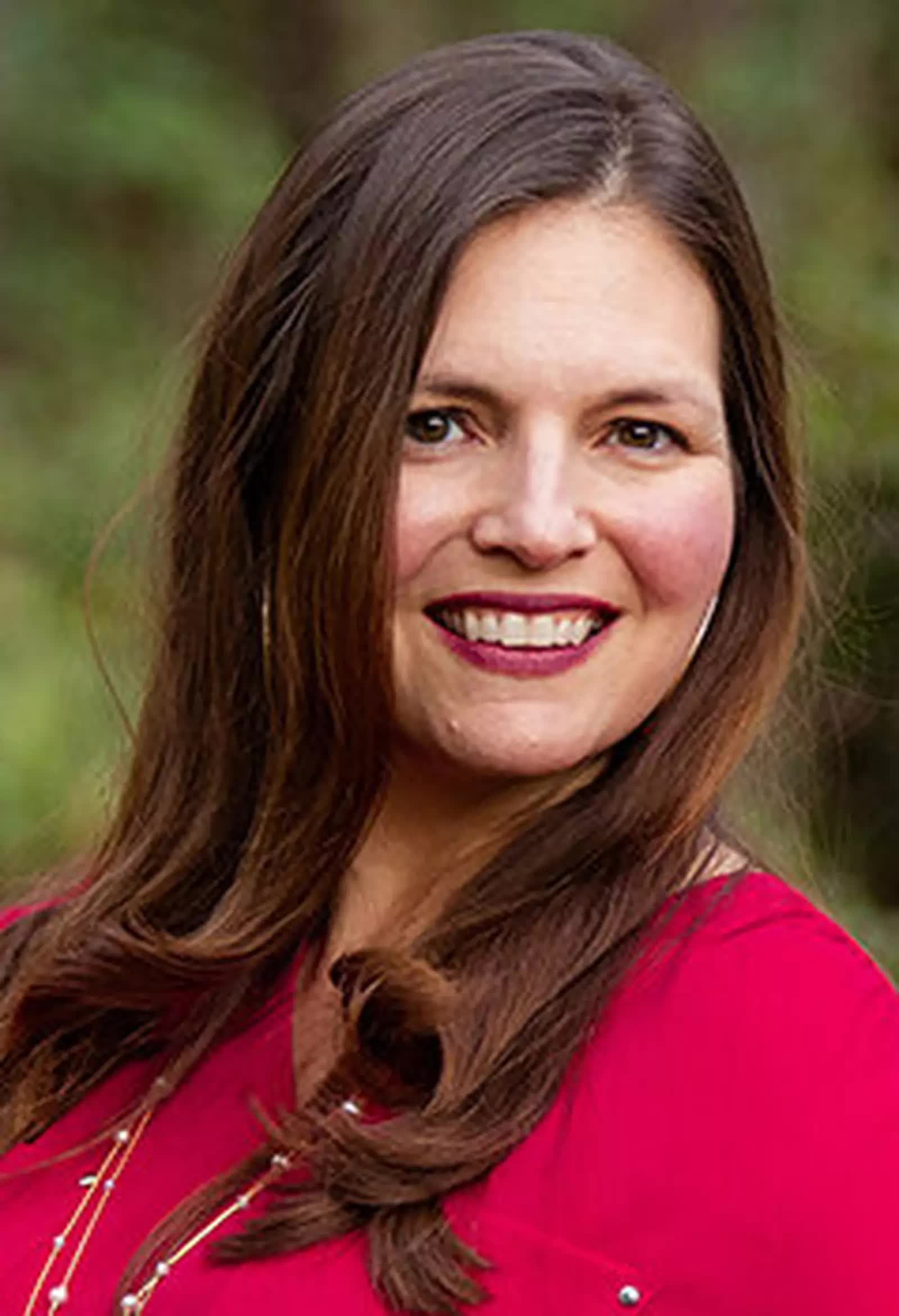6 Simple Steps to Start Meaningful Advent Traditions with Your Family
Christmas and Advent


Audio By Carbonatix
By Jessica Brodie, Crosswalk.com
Perhaps you’ve heard the word “Advent” and thought it was just a fancy church term for the Christmas season. But Advent is far more than this.
The season of Advent, which comes from the Latin word adventus and means "coming" or "visit," begins four Sundays before Christmas. It ends on Christmas Eve.
It is a season of the church year when we prepare for and anticipate the coming of Christ, both as an infant on Christmas morning and at his second coming one day, as the fulfillment of all that was promised.
During Advent, we remember the birth of Jesus in a stable in Bethlehem. We also focus on Jesus’ urgings to “be ready” and keep watch, for we don’t know the day or hour our Lord will return.
Many Christians focus on Christmas Eve and Christmas morning this time of year. We fill stockings with treasures and buy gifts to go under the Christmas tree, opening them in celebration of the true gift we all share: our Savior.
But incorporating Advent traditions brings deeper, added meaning and makes Christmas morning even more joyous. This is because Advent helps us center ourselves on the real message of the season.
God promised a savior, and for many years, generations of God’s people longed for this. They patiently awaited the fulfillment of his promise. When he finally came, our Messiah looked nothing like what we expected. Instead, he was born a tiny baby and laid to rest in a manger.
When he started doing the work of the Father, he was hated by religious leaders, chased from towns, and eventually executed for blasphemy. Yet he rose from the dead and showed us a new and better way: the Jesus way.
In the middle of the hustle and bustle of holiday shopping, Advent is a time to pause and reflect on the coming of our Lord.
When we set time aside to observe Advent, the beauty of the Christmas story and the magnificence of God’s gift become clearer and more meaningful. And you don’t need to be a Bible expert to do this.
Here are six simple steps to start meaningful Advent traditions with your family.
1. Create an Advent Wreath
One extremely meaningful tradition is creating an Advent wreath in your home. And no, you don’t need to be crafty or even own a glue gun to do this.
You can buy an inexpensive wreath at a discount store or gather some real or artificial evergreen branches and bend them into a circular shape.
Those who are more skilled might purchase a piece of floral foam or a metal ring and attach the branches to this with wire or glue. Set your wreath on a table. You can add holly berries, pine cones, or other decorations if you wish.
A wreath represents the holy circle of God’s love and is a symbol of eternal life, which is ensured to all who believe in and follow Jesus.
Next, add four candles in holders — three purple and one pink. These can be long candlesticks or short, stubby ones in glass or ceramic containers. These represent the four weeks of Advent.
The first candle, purple, represents hope for Week One. Week Two, also purple, represents peace. Week Three, a pink candle, represents joy. And Week Four, purple, represents love.
Finally, place a white candle in the center.
This fifth Advent candle called the white Christ candle, represents the holiness and purity of Jesus, as well as how those who accept Jesus as their savior are cleansed of sin.
Make the wreath together. Then, every Sunday during Advent, light the appropriate candle for that week. Talk about how Jesus Christ brings hope, or peace, or joy, or love. Share your thoughts about how we can reflect this in our lives.
On Christmas Eve, light all four candles along with the white Christ candle as you read the Christmas story found in Luke 2:1-20 together.
“For God so loved the world that he gave his one and only Son, that whoever believes in him shall not perish but have eternal life” (John 3:16).
2. Write out the Christmas Story
The story of Christ’s birth is found in Luke 2:1-20. Often, when we read the story, we focus on certain details or just the overall scene. But focusing on each word in each sentence can be a powerful exercise.
This is why writing out the Christmas story can be a wonderful and meaningful Advent tradition.
If your children are old enough to write, have everyone in the family take turns writing a verse. Write one verse each day, beginning with Luke 2:1 and ending with Luke 2:20.
You can write these on a piece of paper or poster board you hang on the refrigerator or other central place in your house.
Or if you are marginally crafty, you can turn these verses into a paper garland. Simply cut out 20 strips of paper (you can make this extra festive by using green and red construction paper).
Then, every day, write down one verse on a strip of paper, then staple or tape the ends together so it becomes a circle.
Each day, after you write the next verse, loop the new paper strip around the previous day’s loop and staple or tape it together. Eventually, you will have a paper garland that you can use to decorate your home.
Bonus: Writing the verses down helps commit them to memory.
Fix these words of mine in your hearts and minds; tie them as symbols on your hands and bind them on your foreheads (Deuteronomy 11:18).
3. Read An Advent Devotional
Consider reading an Advent devotional together as a family, which you can find at any bookstore, whether online or brick-and-mortar.
Start every day with a reading at breakfast. Or, if evenings are easier, read the devotional together at dinnertime. Then, discuss some of the reflection questions as a family.
Advent devotionals that are age- and lifestyle-appropriate exist so even your youngest children can understand and participate. Even if they cannot, it is a powerful act to gather together to reflect as a family and prepare our hearts and minds for Jesus.
Start children off on the way they should go, and even when they are old they will not turn from it (Proverbs 22:6).
4. Make Sunday a Sabbath and Focus on the Theme of That Week
As noted above, every week in Advent reflects a theme. Week One is hope, Week Two is peace, Week Three is joy, and Week Four is love.
Every Sunday begins a new week in Advent, and it’s a new opportunity to reset and refresh our hearts and minds in anticipation of Christ’s coming.
Instead of spending the day running errands, wrapping gifts, making cookies, or shopping, set the day aside for the Lord. Go for a family walk and meditate on the week’s theme.
Take a drive together and admire the holiday lights. Listen to music, watch a Christ-oriented film, or read. Talk about how Christ cultivates hope, peace, joy, or love in our lives.
There are six days when you may work, but the seventh day is a day of sabbath rest, a day of sacred assembly. You are not to do any work; wherever you live, it is a sabbath to the Lord (Leviticus 23:3).
5. Go Caroling and Sing Advent Songs
Another meaningful and enjoyable family Advent tradition is caroling. Many people today don’t think they like singing. They fear they have a “bad voice” or don’t know the words.
But the Bible tells us the Lord loves singing, and it is something God’s people have done to praise him since the earliest of days. Revelation shows us a picture of heaven filled with people singing and praising the Lord through song and music.
The Bible makes it clear that God considers both singing and preaching to be great ways for God’s word to abide and thrive in our hearts.
As the Apostle Paul writes in Colossians 3:16, “Let the message of Christ dwell among you richly as you teach and admonish one another with all wisdom through psalms, hymns, and songs from the Spirit, singing to God with gratitude in your hearts.”
Even if we don’t enjoy singing ourselves, children typically do. Songs also make it easier for the meaning to take hold of our hearts. We often remember the lyrics of songs better than words on a page or spoken to one another.
Instead of singing Christmas songs, sing Advent songs — songs that lift up the Lord’s coming rather than his joyous arrival.
The hymn “O Come O Come Emmanuel” is among the most popular Advent songs, focusing on the coming of Christ. Another is “Come, Thou Long Expected Jesus.”
Print out lyrics and play the music on your phone as you sing in your living room or walk the streets of your neighborhood singing together. You might also consider caroling at a nursing home or extended care facility, bringing joy to others who might be struggling this time of year.
I will sing to the Lord all my life; I will sing praise to my God as long as I live (Psalm 104:33).
6. Make a Jesse Tree
Finally, consider making a Jesse Tree as a family. A Jesse Tree was inspired by the verse from the prophet Isaiah, who prophesied about the coming of Jesus, noting, “A shoot will come up from the stump of Jesse; from his roots a Branch will bear fruit” (Isaiah 11:1).
With a Jesse Tree, people craft a tree and then make or hang ornaments representing stories of the Bible on the tree. The point is to show that the entirety of the Bible is a love story, pointing to Jesus and the beautiful plan God created to save his people through his son, our savior.
Your Jesse Tree can be elaborate or very simple. You can buy a small tree at a discount store or make one out of cardboard, construction paper, tree branches, burlap, or other craft supplies. You can even draw a Jesse Tree on a large piece of paper or poster board.
Then, consider stories throughout the Bible that point to the coming of Christ, the enduring love of God, and the fulfillment of God’s promises.
From these stories, create ornaments for your tree. You can cut out images from magazines, draw pictures on small pieces of paper and color them, or buy small trinkets at the store to represent symbols of these stories.
You’ll need about 20-24 ornaments, one for each day of Advent. Every day, hang one ornament on your Jesse Tree.
For example, many of us know the story of Adam and Eve defying God by eating from the tree of the knowledge of good and evil in the Garden of Eden.
Yet in spite of their disobedience and the consistent disobedience of all people, God loves us still and sent his son, Jesus. So, you might hang a small apple (or color a small picture of an apple) to represent the fruit of this tree.
If you are not very familiar with the entirety of the Bible, here is a list of verses to read, meditate on, and then consider for your tree. As you become more familiar with the Bible and its many stories, your list of ornaments might evolve.
A shoot will come up from the stump of Jesse; from his roots a Branch will bear fruit (Isaiah 11:1).
There are many more traditions you can incorporate into Advent as a family; these are a few to get you started. You’ll find that as the years pass, your traditions might change and deepen or grow simpler.
Either way, know that as your heart prepares for the coming of Christ, you will be blessed.
For further reading:
Advent Candle of Hope: Here’s What Really Matters This Holiday Season
5 Things Christians Should Know about Advent
Advent Wreath and Candles: Meaning, Symbolism, Purpose Explained
 Jessica Brodie is an award-winning Christian novelist, journalist, editor, blogger, and writing coach. She is also the editor of the South Carolina United Methodist Advocate, the oldest newspaper in Methodism. Her Christian contemporary novel, The Memory Garden, released this spring and has been in the top ten Christian women’s fiction and Christian contemporary books on Amazon; book two in the series releases this fall. Learn more about Jessica’s writing ministry and read her faith blog at https://jessicabrodie.com. She has a YouTube devotional, and you can also connect with her on Facebook, Instagram, and more. She’s also produced a free eBook, A God-Centered Life: 10 Faith-Based Practices When You’re Feeling Anxious, Grumpy, or Stressed.
Jessica Brodie is an award-winning Christian novelist, journalist, editor, blogger, and writing coach. She is also the editor of the South Carolina United Methodist Advocate, the oldest newspaper in Methodism. Her Christian contemporary novel, The Memory Garden, released this spring and has been in the top ten Christian women’s fiction and Christian contemporary books on Amazon; book two in the series releases this fall. Learn more about Jessica’s writing ministry and read her faith blog at https://jessicabrodie.com. She has a YouTube devotional, and you can also connect with her on Facebook, Instagram, and more. She’s also produced a free eBook, A God-Centered Life: 10 Faith-Based Practices When You’re Feeling Anxious, Grumpy, or Stressed.


























